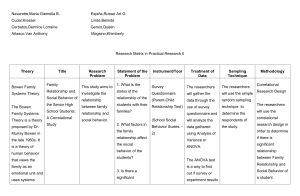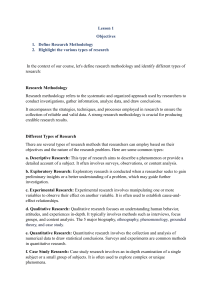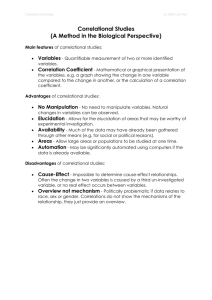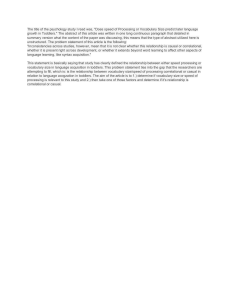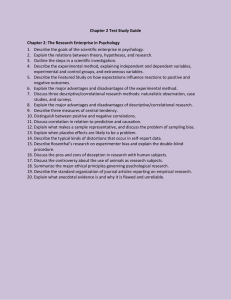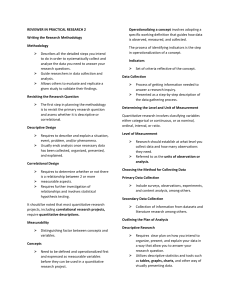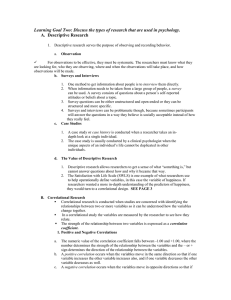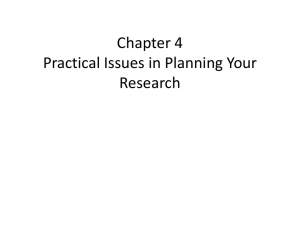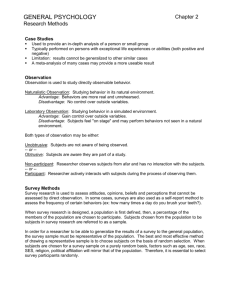Methods Power Point
advertisement
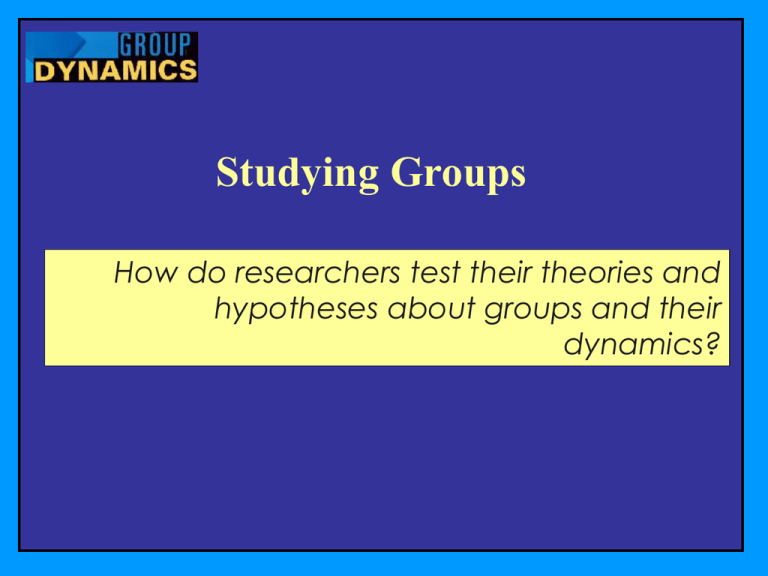
Studying Groups How do researchers test their theories and hypotheses about groups and their dynamics? What Are the Three Critical Requirements of a Scientific Study of Groups? Reliable and valid measurement Research procedures to test hypotheses about groups Theories that organize knowledge of groups What Methods Do Researchers Use to Measure Individual and Group Processes? Observational measures: observing and recording events – Qualitative and quantitative (structured) measures • Bales's Interaction Process Analysis (IPA) classifies behaviors into two categories: task and relationship behaviors • Bale’s SYMLOG (Systematic Multiple Level Observation of Groups) identifies 3 key dimensions: dominance/submissiveness, friendliness/unfriendliness, and acceptance of authority/nonacceptance of authority. What Methods Do Researchers Use to Measure Individual and Group Processes? Self-report measures: group members describe their perceptions and experiences – Example: Moreno's sociometry method – Sociometric structures: stars, rejected, etc. What Methods Do Researchers Use to Measure Individual and Group Processes? Any measure, to be scientifically useful, must have reliability and validity. What Are the Key Characteristics of, and Differences Between Case, Experimental, and Correlational Studies of Group Processes? Case study – Example: Groupthink groups (Janis) – Bona fide groups Experiments – Key features • manipulate independent variable • measure dependent variable • control other variables What Are the Key Characteristics of, and Differences Between Case, Experimental, and Correlational Studies of Group Processes? Experiments (cont.) – Example: Lewin, Lippitt, and White’s study of leadership – Strength: Test cause-effect relationships What Are the Key Characteristics of, and Differences Between Case, Experimental, and Correlational Studies of Group Processes? What are the strengths and weaknesses of case, experimental, and correlational designs? – Case studies: atypical of most groups, subjective, stimulate theory – Experiments: too artificial, not “real” groups, but clearest test of cause and effect. – Correlational studies: limited information about causality but precise estimates of the strength of relationships, less artificial, fewer ethical concerns – Multilevel approaches are uniquely informative What Theoretical Perspectives Guide Researchers’ Studies of Groups? Motivational models: Lewin's level-of-aspiration theory Behavioral approaches: Thibaut and Kelley's social exchange theory Systems theory: Input-process-output models of performance Cognitive theories: Berger's expectation-states theory Biological perspectives: Evolutionary psychology (or sociobiology)
